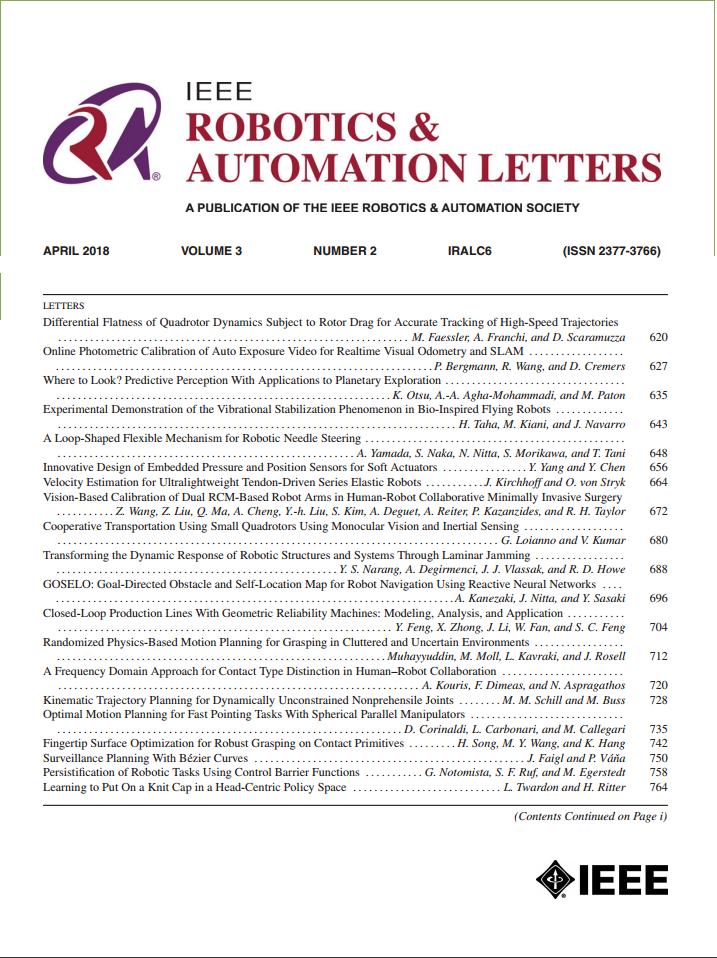基于生成树的系留机器人覆盖
IF 4.6
2区 计算机科学
Q2 ROBOTICS
引用次数: 0
摘要
系留机器人在水下和灾难恢复任务中得到广泛应用。本研究重点关注系留机器人的覆盖路径规划(CPP)问题,同时考虑到电缆约束和环境中存在禁区的情况。我们建议采用基于生成树的覆盖算法来解决 CPP 问题。理论复杂性分析表明,在涉及禁区的情况下,该算法具有 NP 完备性。我们展示了如何通过在配置图中搜索一棵树来解决 CPP,以及如何缩小该图的大小以更快地计算近似解。我们介绍了与这些近似解相对应的整数线性规划 (ILP) 模型,并在各种实例上对它们进行了实验比较。本文章由计算机程序翻译,如有差异,请以英文原文为准。
Spanning-Tree Based Coverage for a Tethered Robot
Tethered robots find widespread application in underwater and disaster recovery missions. This study focuses on the coverage path planning (CPP) problem for a tethered robot, considering cable constraints and the presence of forbidden areas in the environment. We propose adapting the spanning tree- based coverage algorithm to address CPP. Theoretical complexity analysis reveals NP-completeness in cases involving forbidden areas. We show how to solve CPP by searching for a tree in a configuration graph, and how to reduce the size of this graph to compute approximate solutions faster. We introduce Integer Linear Programming (ILP) models corresponding to these approximations and experimentally compare them on various instances.
求助全文
通过发布文献求助,成功后即可免费获取论文全文。
去求助
来源期刊

IEEE Robotics and Automation Letters
Computer Science-Computer Science Applications
CiteScore
9.60
自引率
15.40%
发文量
1428
期刊介绍:
The scope of this journal is to publish peer-reviewed articles that provide a timely and concise account of innovative research ideas and application results, reporting significant theoretical findings and application case studies in areas of robotics and automation.
 求助内容:
求助内容: 应助结果提醒方式:
应助结果提醒方式:


